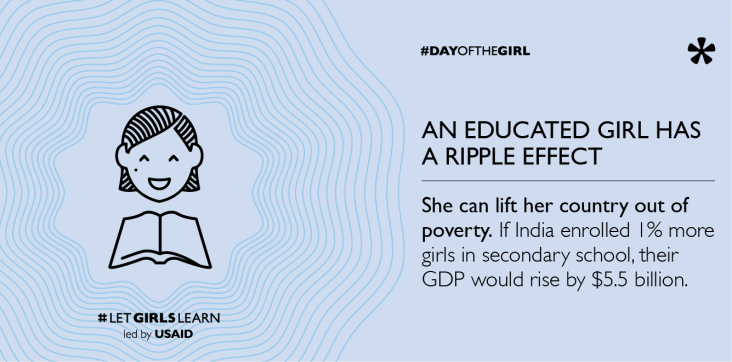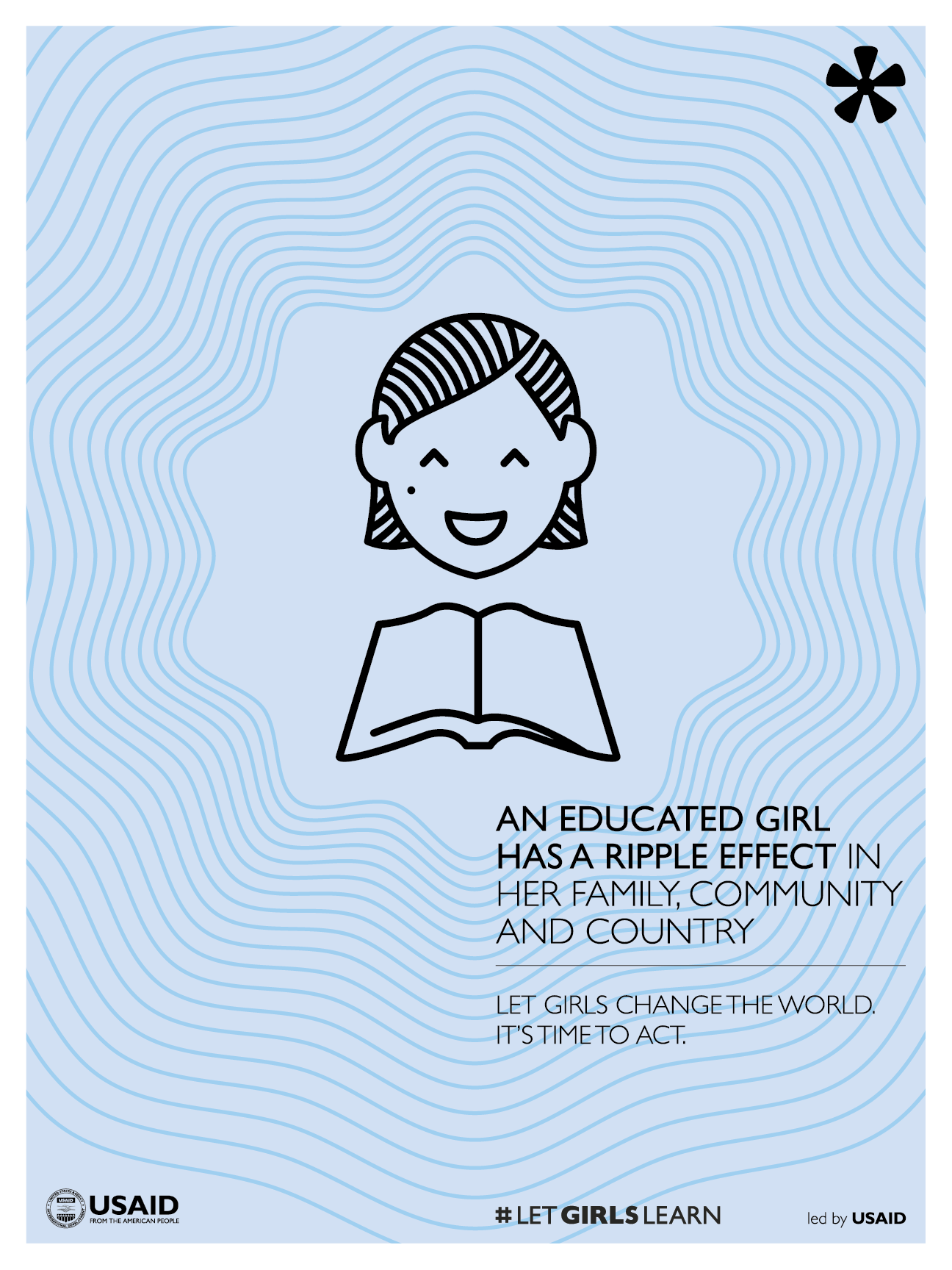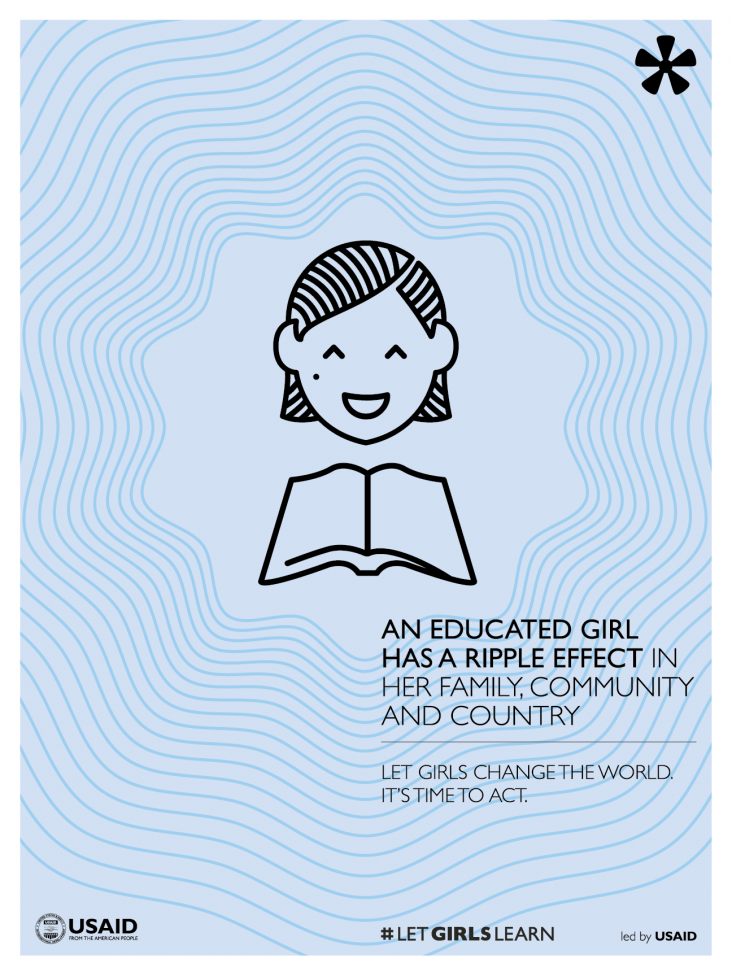- What We Do
- Agriculture and Food Security
- Democracy, Human Rights and Governance
- Economic Growth and Trade
- Education
- Environment and Global Climate Change
- Gender Equality and Women's Empowerment
- Global Health
- Humanitarian Assistance
- Transformation at USAID
- Water and Sanitation
- Working in Crises and Conflict
- U.S. Global Development Lab
Speeches Shim
She can lift her country out of poverty. If India enrolled 1% more girls in primary school, their GDP would rise by $5.5 billion.
Poster
Poster - An Educated Girl Has A Ripple Effect ![]() (pdf - 424k)
(pdf - 424k)
Today, 62 million girls around the world are not in school. What will the world look like when we educate all girls?
What Happens If We Let Girls Learn?
She can lift her country out of poverty. If India enrolled 1% more girls in secondary school, their GDP would rise by $5.5 billion.
She can feed her family and her country. Investing in girls' education could boost agricultural output in Sub-Saharan Africa by 25%.
She can increase her income. For every year a girl stays in school, her income can increase by 15 to 25%.
She will invest in future generations. Educated women invest 90% of their income into their family.
She will send her children to school, continuing the cycle of education. Educated mothers are more than twice as likely to send their children to school.
What USAID is Doing To Let Girls Learn
Investing $231.6 million in new programs that support primary and secondary education for girls.
Has made significant progress in Guatemala where every 7-12 year old is enrolled in primary school.
Establishing 5,000 community based classes in Afghanistan to provide education to 174,000 girls.
Supports Syrian refugees living in Jordan through a grant to UNICEF's No Lost Generation Program, which is educating 90,000 girls.
Investing $17.4 million in emergency education for girls in South Sudan who were forced to flee their homes. The program will reduce gender-based violence, promote female leadership in camp activities, provide safe learning spaces, and gender-segregated sanitation facilities.





Comment
Make a general inquiry or suggest an improvement.